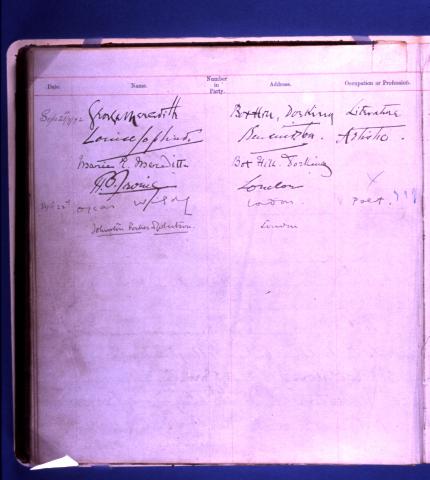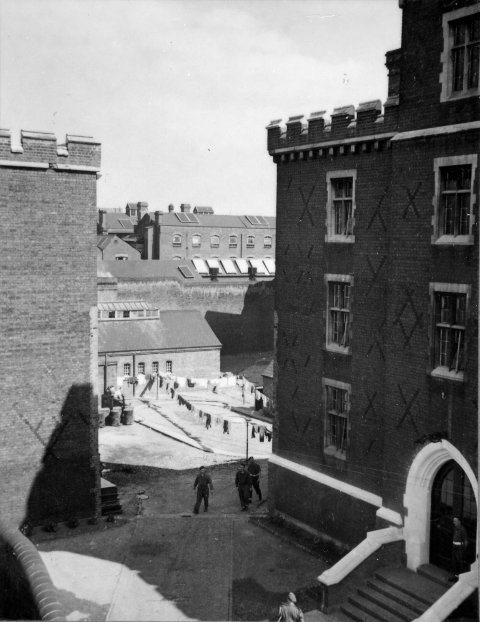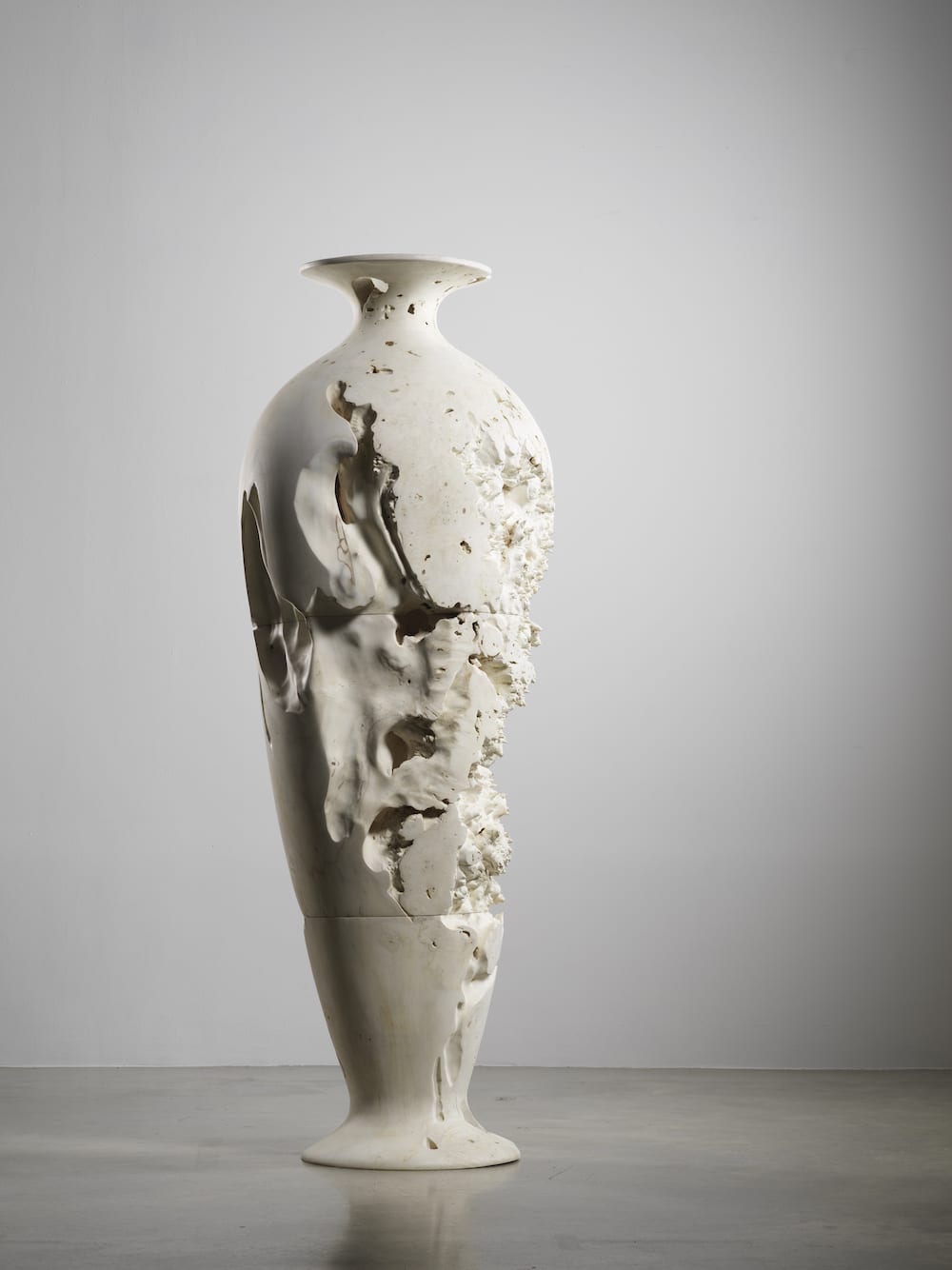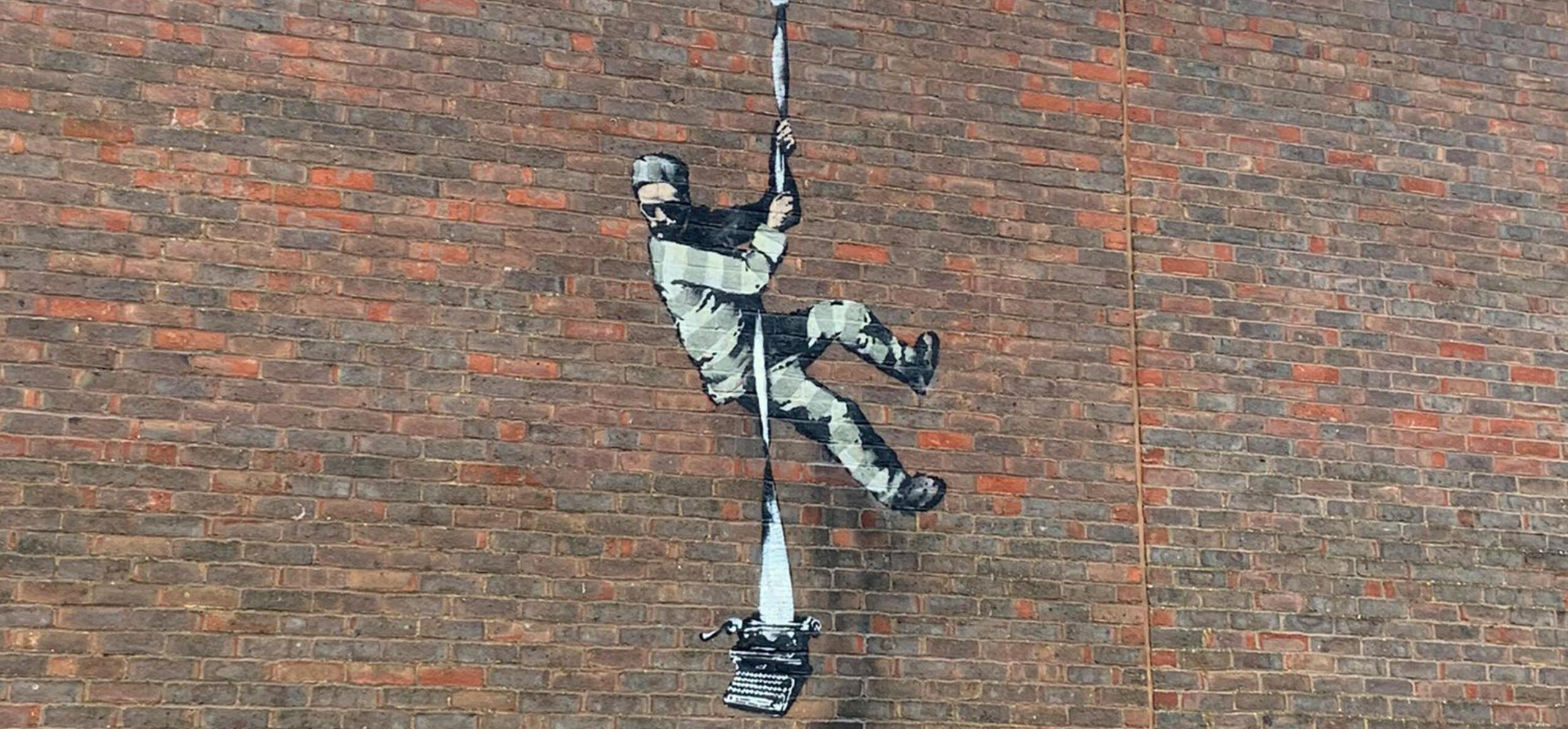Written by Anna Jones, Programme Manager of Museums Partnership Reading (an Arts Council England funded partnership of Reading Museum and The Museum of English Rural Life).
‘All art is quite useless’, poet and playwright Oscar Wilde notoriously claimed in 1891 in the preface to his only novel, the hauntingly Gothic The Picture of Dorian Gray.
Useless maybe, but art was the cause of much surprise, delight and social media speculation as our town woke to the image of an escaping prisoner on the wall of the disused Reading Prison in March this year. Surprise and delight as it was immediately suspected, and then later confirmed, to be a bona fide Banksy.
And useless maybe not, as the genuine rubber stamp (verified by the street artist’s website and Instagram) places Reading, and particularly the prison building, on the art world map at a time when Reading Borough Council, Reading East MP Matt Rodda, and many residents and artists are campaigning to transform the site into a cultural venue.
'We are thrilled that Banksy appears to have thrown his support behind the council's desire to transform the vacant Reading Gaol into a beacon of arts, heritage and culture', a local authority spokesperson enthused.
Banksy's artistic practice
Artwork by Banksy is often closely linked to place, although many are more highly political charged. The iconic and much reproduced Girl with Balloon, a sign of lost hope, appeared on the 425-mile-long West Bank barrier, a wall separating Israel from Palestinian considered illegal by the United Nations.
More recent UK pieces include a star being chiselled from the EU flag near the Dover ferry terminal. However, Dover District Council clearly had no plans for global graffiti fame as the derelict building used as Banksy’s giant canvas was soon whitewashed over. Dover's Brexiteer MP Charlie Elphicke described the piece as 'cultural vandalism'. The list of reasons to live in Reading just got longer.
Infamously anonymous, we know almost nothing about Banksy himself. Even if himself is the preferred pronoun, the prolific nature of the work even leads some to believe Banksy might be a collective rather than a one-person-street-art-world-wide-phenomena.
In fact, not only did Reading get the gift of this piece of highly prized public art. We also gained a tantalising and rare glimpse into the creative practice, working techniques and tongue-in-cheek humour of whoever this elusive artist really is. Still profiled on the landing page of Banksy's website, a short video clip, confirming the validity of the prisoner descending the outside wall, shows the piece being created under the cover of darkness, cut with archive commentary from American painter Bob Ross. The clever editing, the use of multi-layered stencilling at height, the covert and technically illegal operation on a Ministry of Justice site are all mini-masterpieces in their own right. And this film gives us the title too: Create Escape.
'The Ballad of Reading Gaol'
As always with Banksy's artworks, it is not just the stencilling that is multi-layered, but the message too.
Look a little closer at the artwork, and at the end of the bedsheet-turned-rope, the tool facilating this Create Escape, is a typewriter.
Now, Banksy might be riffing on the jazz legend Miles Davis ‘Knowledge is Freedom’. Or the broader premise of words and language offering metaphorical means of escape. But those who know the history of the building – previously Reading Gaol – made different connections.
In 1895, as The Importance of Being Earnest premiered on the London stage to great critical acclaim, Oscar Wilde took to the courts to prosecute the Marquess of Queensberry for criminal libel.

This page of the Huntley and Palmers factory guestbook in Reading was signed by Wilde when he visited in 1892. Notice how he lists his profession as "poet"! The Wildes and the Palmers were good friends. REDMG : 1997.120.267
Father of Wilde’s lover Lord Alfred Douglas, the vengeful Marquess unearthed evidence that caused Wilde to drop the libel charges, but eventually led to his own arrest and trials for ‘gross indecency’ with men. At the height of fame and success, Oscar Fingal O'Flahertie Wills Wilde was convicted and sentenced to two years' hard labour, the maximum penalty. Although consensual, until England decriminalised homosexuality in 1967, Oscar was faced with prison, and was incarcerated in Reading.
Under the pseudonym of Prisoner C33, an allusion to Wilde’s cell number C33, 'The Ballad of Reading Gaol' was first published in 1898. The poem, perhaps Wilde's best-known and most accomplished, tells the story of murder and how all our fate is to destroy what or who we love. Along with themes of loss, isolation and pain, it gives a glimpse into the horrors of life as a Victorian prisoner:

Reading Gaol, where Oscar Wilde was incarcerated from 1895 to 1897. REDMG : 1946.52.193
We sewed the sacks, we broke the stones,
We turned the dusty drill:
We banged the tins, and bawled the hymns,
And sweated on the mill:
But in the heart of every man
Terror was lying still'.
- Oscar Wilde, 'The Ballad of Reading Gaol'
The ‘mill’ was a treadmill, invented by Norfolk-born engineer (or sadist – take your pick) William Cubitt. Prisoners, including Wilde, were forced onto this contraption for over eight hours a day – sometimes to pump water or grind corn, but often just punishment for punishment’s sake. It was 'a gruelling physical experience [...] that tortured the prisoner, body and soul, leaving many destroyed by the experience'.
Only three years later, Oscar Wilde died at the age of 46. The emotional and physical pain must have been unbearable, and we can only wonder if the famous line Wilde exclaimed on leaving Reading Gaol in 1897 ‘Oh Beautiful World!’ was laden more with bitter irony than the joy of liberty.
'Oh beautiful world!'
Reading Museum has just installed an astonishing new sculpture produced by Eleanor Lakelin, celebrating the legacy of Oscar Wilde in Reading. Created from a felled diseased chestnut whose roots would have burrowed under Prisoner C33, the piece is a powerful symbol connecting Wilde's past with Reading today, and the Museum are keen to ensure that this legacy was preserved.

Eleanor Lakelin's 'Oh Beautiful World!'
So, like our Green Line, we wait for ages and then get two amazing pieces of contemporary art celebrating Oscar along at once. But we do need to ensure Create Escape is more secure than the prisoner it depicts. Soon after Banksy confirmed the Reading piece was real, the Wilde typewriter was defaced with red paint and the tag 'Team Robbo' – reported as a reference to Banksy's long-running feud with the late street artist King Robbo. But in this story that keeps on giving, a second piece, depicting just the last section of rope and typewriter, was found on Reading Bridge.
Council Leader Jason Brock said they would press the Ministry of Justice to instigate security measures to make sure further attacks do not happen. At the time of writing, The Ministry of Justice said it was considering what to do with these artworks. It is a reminder more than ever of the importance of the role of museums to safeguard and share our cultural heritage.
To paraphrase Wilde’s words given to The Importance of Being Earnest’s Lady Bracknell, 'To lose one Banksy may be regarded as a misfortune; to lose both looks like carelessness'.
Find out more
All at Reading Museum will continue to follow the story of the community bid for Reading Gaol, and hope that its history will be long preserved for future generations.
To view Oh Beautiful World! in person, now displayed in Reading Museum, find out how you can book your free museum visit after the reopening of our galleries on the 18th May 2021. Our galleries tell the story of Reading's past and present and the history of place, people and community.
Read more stories from Reading's history on the Reading Museum blog.





